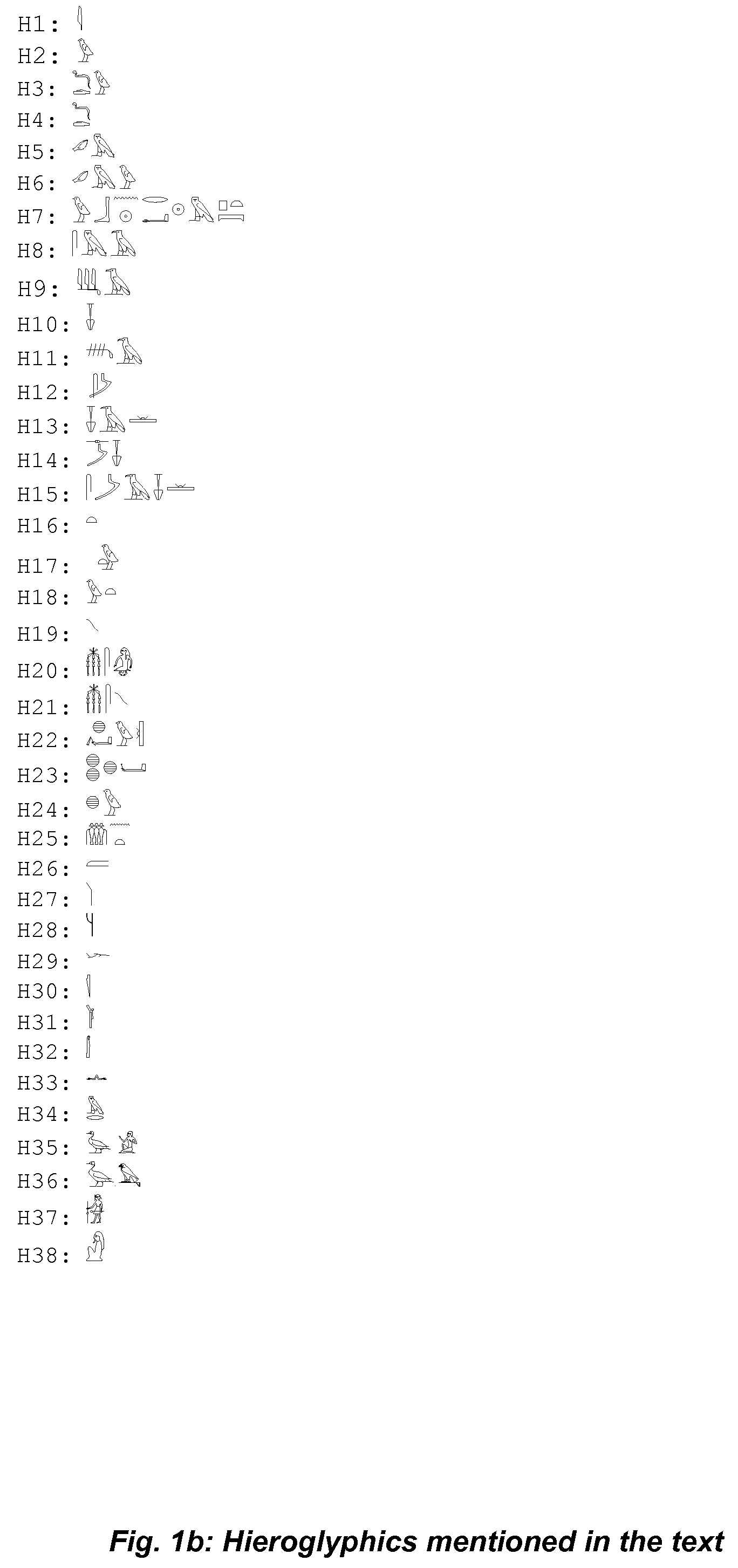Text analysis, transliteration and translation method and apparatus for hieroglypic, hieratic, and demotic texts from ancient egyptian
a text analysis and hieroglyphic technology, applied in speech analysis, instruments, special data processing applications, etc., can solve the problems of prior art translators not being able to analyse grammatical issues beyond sentences, and the loss of ancient egyptian. , to achieve the effect of reducing the number of alternatives
- Summary
- Abstract
- Description
- Claims
- Application Information
AI Technical Summary
Benefits of technology
Problems solved by technology
Method used
Image
Examples
Embodiment Construction
The A1 Array
[0081]There is a clear distinction between the text found on an artefact and its machine representation, as disclosed herein. (i) Due to the deterioration of the artefact, misspellings, poor handwriting, unknown occurrences of words etc, the text may only be recognizable, in the case Hieratic / Demotic, as stroke patterns, or in the case of the hieroglyphic script as multiple glyph interpretations, which may internally render any given position in the text as having multiple interpretations. (ii) Furthermore, it is essential that information pertaining to the position of any given symbol / stroke pattern in a group pattern is maintained as it is not only relevant for the exact reproduction of the text, but essential in the interpretation of the word itself, as one and the same word may be written using an arbitrary number of pattern formations. (ii) When considering text written in Hieratic / Demotic a stroke pattern may equate to one or more hieroglyphic symbols, as is the ca...
PUM
 Login to View More
Login to View More Abstract
Description
Claims
Application Information
 Login to View More
Login to View More - R&D
- Intellectual Property
- Life Sciences
- Materials
- Tech Scout
- Unparalleled Data Quality
- Higher Quality Content
- 60% Fewer Hallucinations
Browse by: Latest US Patents, China's latest patents, Technical Efficacy Thesaurus, Application Domain, Technology Topic, Popular Technical Reports.
© 2025 PatSnap. All rights reserved.Legal|Privacy policy|Modern Slavery Act Transparency Statement|Sitemap|About US| Contact US: help@patsnap.com



